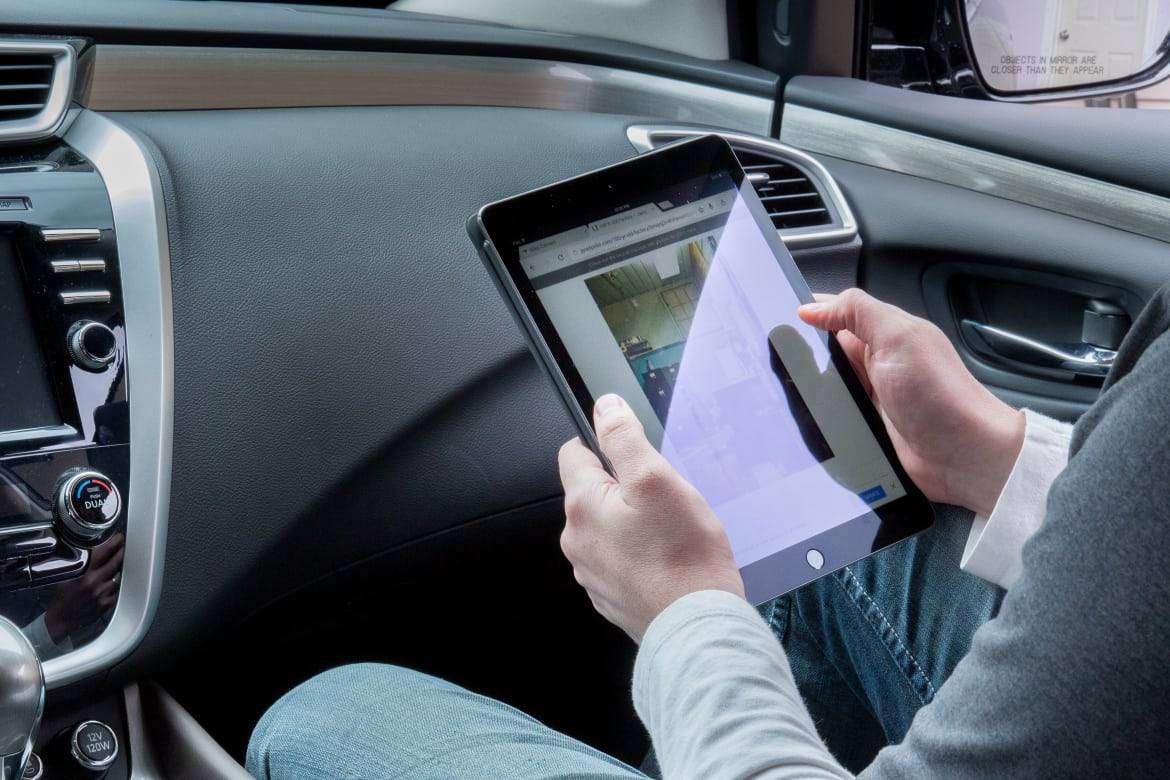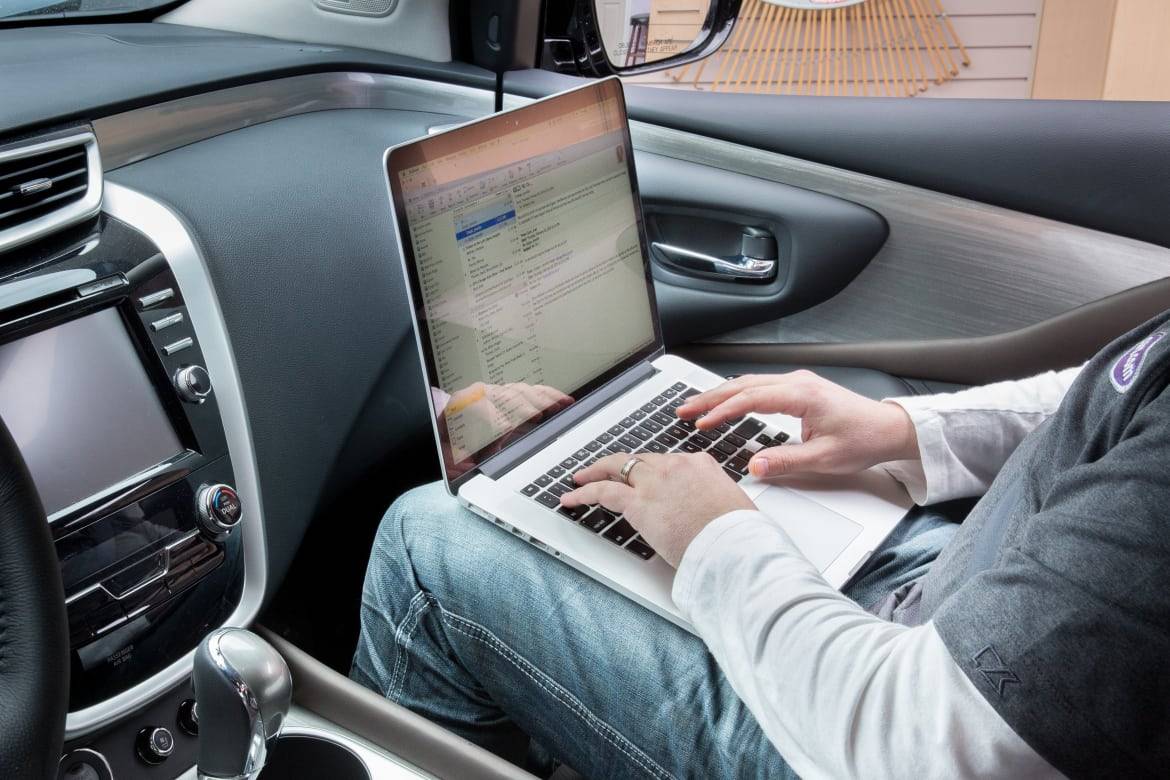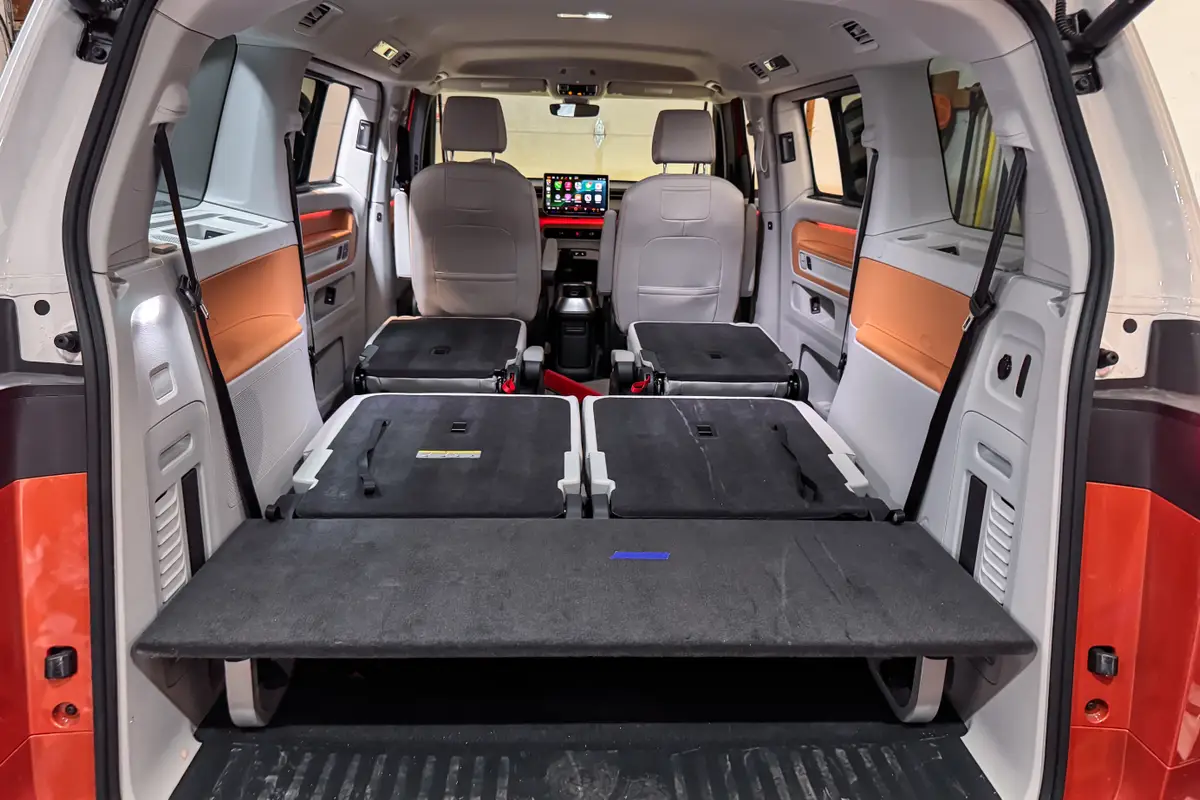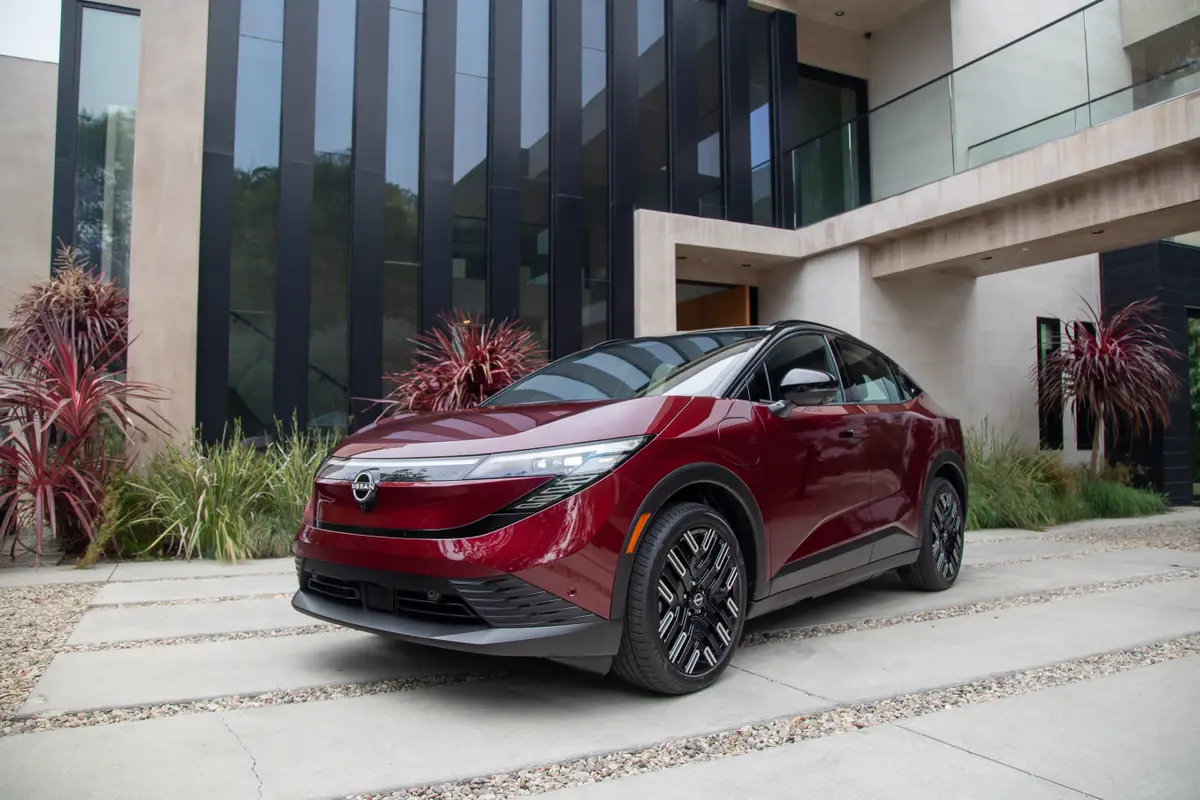Airbag Vs. iPad: Handheld Electronics Are Projectiles, Too


Responsible drivers tell their passengers to buckle up, but should you also suggest they put their laptops and smartphones away? In a collision, unsecured personal electronics become projectiles — and airbags could send them right back at you.
Related: IIHS: Late-Model SUVs Have Lowest Driver Death Rate; Small Cars Have the Highest
The National Highway Traffic Safety Administration says frontal airbags reduce the fatality risk for belted occupants by 11 percent to the tune of nearly 37,000 lives saved between 1987 and 2012. But in order to do that, most front airbags inflate in less than 1/20th of a second at speeds of up to 200 mph.
What happens when something’s in the way?
We posed the question to safety experts, and a common thread soon emerged. Having items in the way of a deploying airbag are a recipe for bad news, but anything that’s unsecured — whether a laptop or a Labrador — poses a hazard.
“All loose objects may become projectiles in the event of a crash, not just laptops,” Fiat Chrysler Automobiles safety spokesman Eric Mayne told us. If you want to know why, watch the interior camera in a crash-test video to see how chaotic things get during a crash. Airbags balloon from their chambers. Head restraints pitch forward. Pieces of cabin trim fly around. And that’s without any unsecured objects.
“Remember that airbags are intended to be fully deployed before an occupant starts moving toward [them],” said safety advocate Joe Colella, who heads the Washington, D.C.-based Traffic Safety Projects. “But if an object is between the bag and the occupant it can become a big problem.”
Case Study: Police Cars
Early case studies came from police cars, which were often strewn with dash-mounted equipment. The line of work brought its share of accidents and airbag deployment; in fact, NHTSA says crashes have become the predominant cause of officer deaths since the 1990s, and airbags deployed in more than half of all fatal incidents in the 2000s.
If patrol cars had equipment in the way, airbags sometimes launched it at officers. One 2002 report documented instances of airbags sending radar equipment, a rifle and two laptops into officers’ heads in four separate instances. The results? Concussions, lacerations, eyesight loss, tooth damage and a broken nose.

Electronics the Culprit? Not So Fast
Granted, a police-issued laptop and its mounting hardware pose a different threat than your spouse’s iPad. But the risk remains — especially since personal electronics are so widespread. As of January 2014, Pew Research reports 58 percent of American adults own a smartphone, and more than 4 in 10 have a tablet computer.
Still, the Insurance Institute for Highway Safety downplays the threat of handheld electronics per se. Frontal collisions still accounted for more than half of all vehicle-occupant deaths in 2013, but IIHS spokesman Russ Rader said the agency hasn’t seen data that suggest electronics in the front seat are “a significant problem.”
Just Put It Away?
Some experts acknowledge the nuances between one device and another. Colella conceded that “smaller objects may mitigate risks,” and Rader said “something like a laptop would probably be pushed downward into the occupant’s lap” by an airbag. But every expert drives home the same conclusion: The only way to remove the risk of injury is to keep all loose objects — electronics and otherwise — secured or stowed.
“Crashes are often complicated, so itís difficult to predict what would happen,” Rader cautioned. “Any kind of loose object could cause injury.”
NHTSA kept its comments to just that. The agency “encourages drivers to avoid having loose objects in a vehicle’s passenger compartment,” officials said in a statement to Cars.com. “In a crash situation, loose objects become projectiles and can injure all passengers.”
It seems unrealistic to expect passengers to dump their devices altogether, however. Even with a full slate of road-trip games and sing-alongs, convincing them to abstain from working, checking social media or surfing the web seems like a long shot — particularly as some automakers all but encourage such activity with in-car Wi-Fi. Colella admitted as much, but it doesnít deter him from trying to get people closer to it.
“In today’s world, preaching to ‘just drive [or] ride’ is unrealistic,” he said. “All we can do is educate and empower people to move a little closer to that ideal.”

Former Assistant Managing Editor-News Kelsey Mays likes quality, reliability, safety and practicality. But he also likes a fair price.
Featured stories




